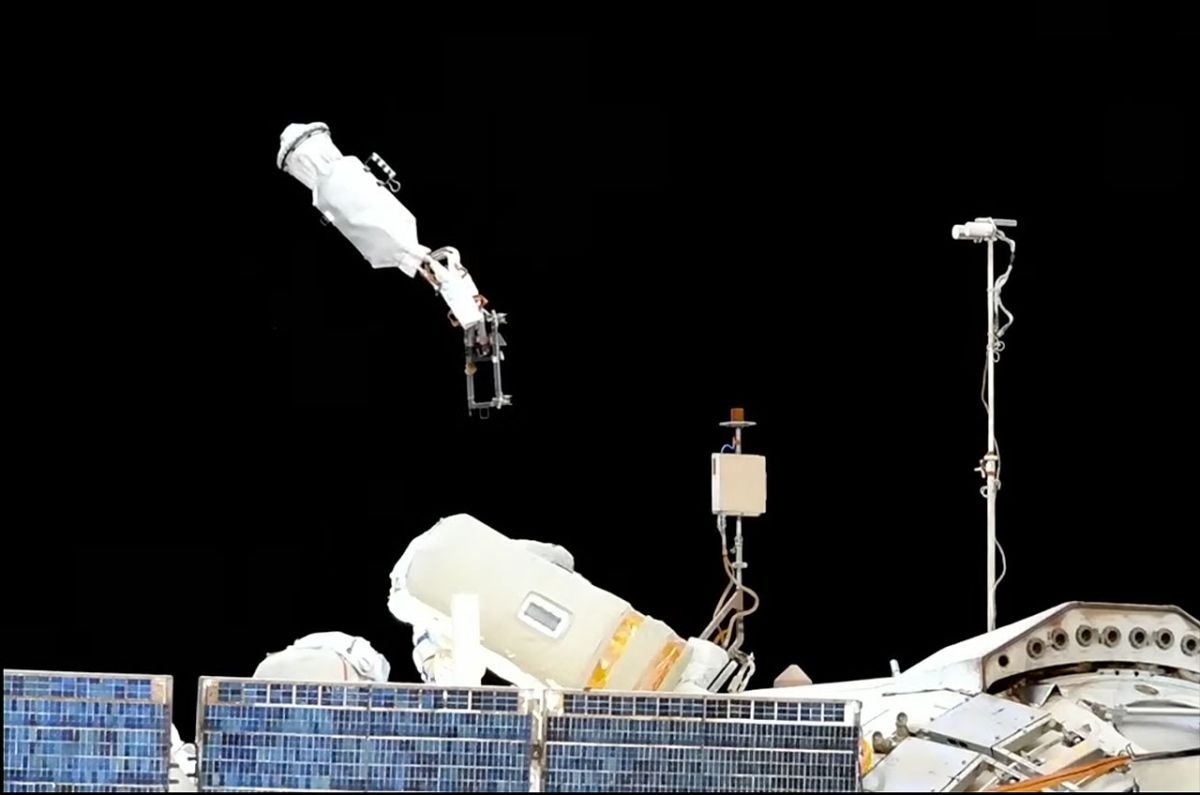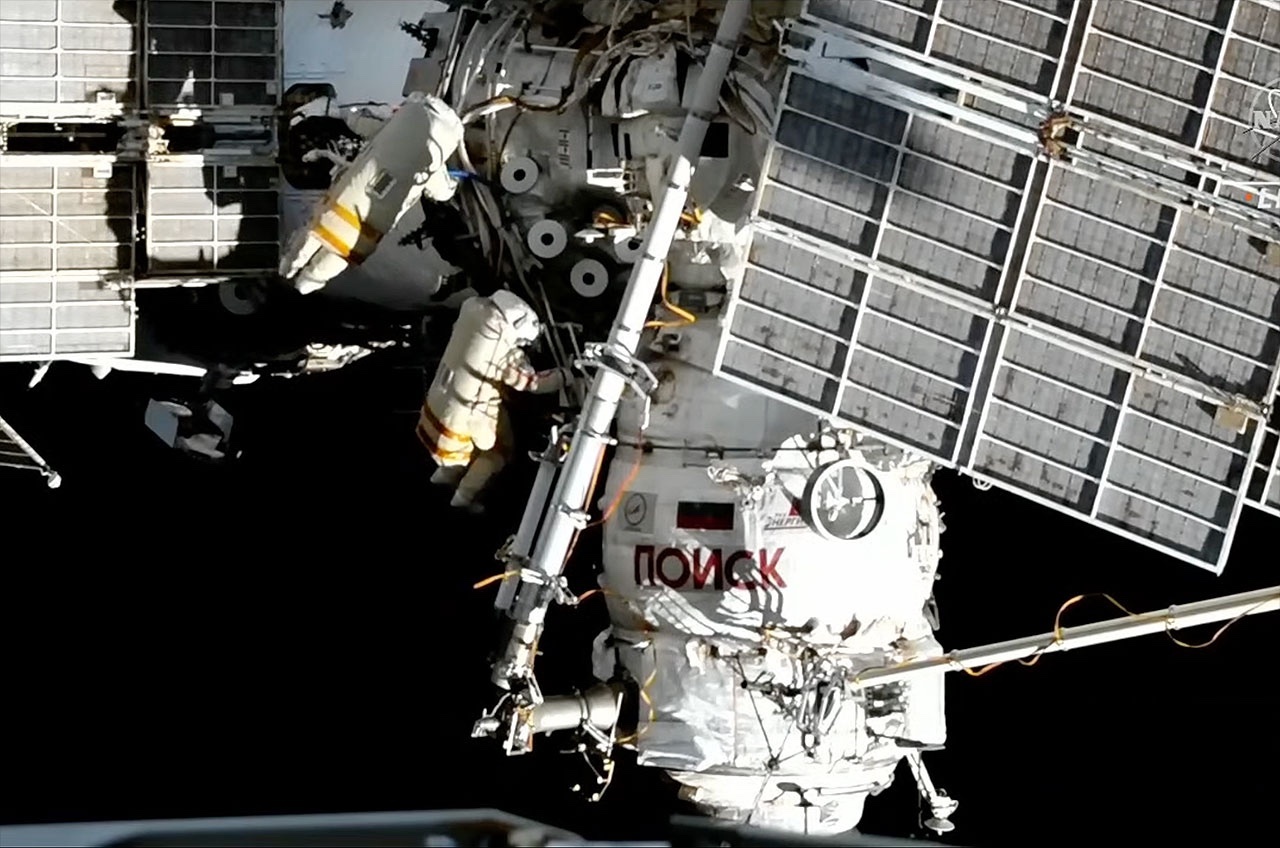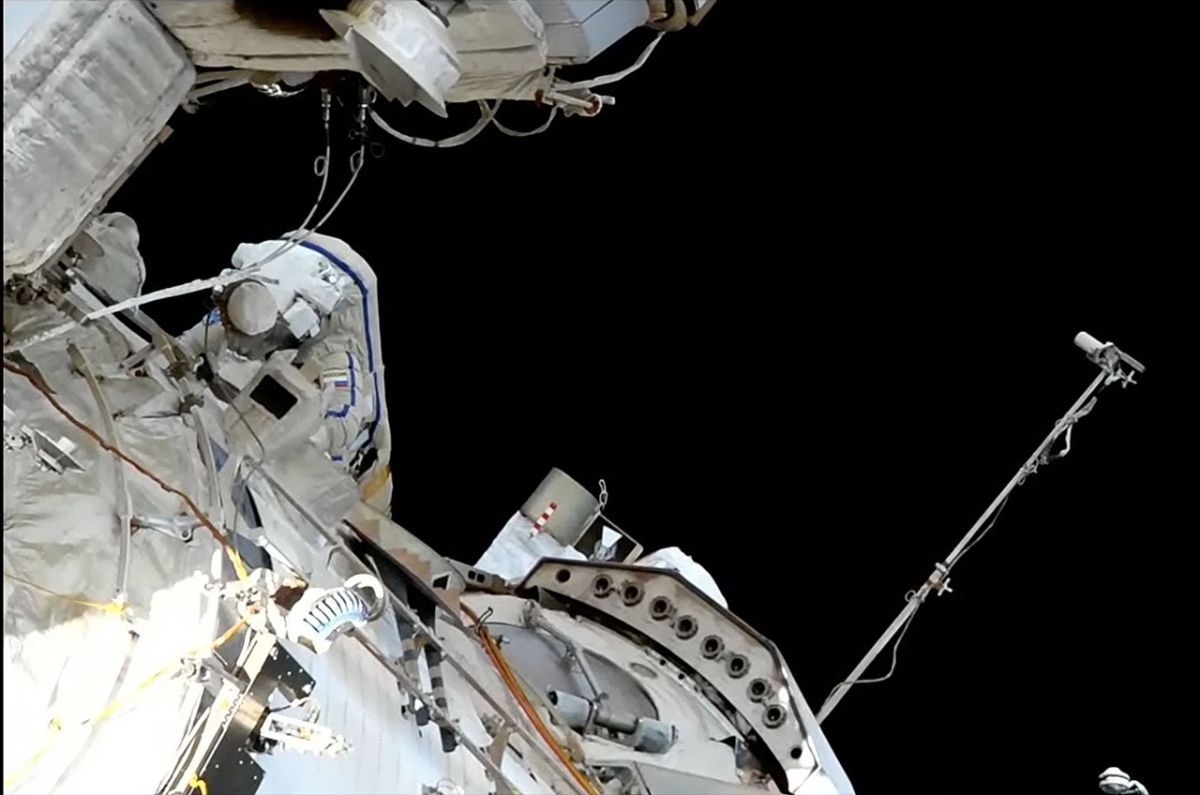24.06.2023
'Wave goodbye to it. Rest in peace.'

An outdated white, cylindrical communications device is seen floating away from the International Space Station after it was jettisoned by Russian cosmonauts Sergey Prokopyev and Dmitry Petelin during a spacewalk on June 22, 2023. (Image credit: NASA TV)
Two Russian cosmonauts spent six hours outside the International Space Station on Thursday (June 22) cleaning up the exterior of the orbiting laboratory by removing and tossing overboard a trio of no longer needed devices, including a spent science experiment.
Expedition 69 commander Sergey Prokopyev and flight engineer Dmitry Petelin, both of Russia's federal space corporation Roscosmos, exited the space station's Poisk module at 10:24 a.m. EDT (1424 GMT) on Thursday.
In addition to jettisoning hardware, the spacewalk also included the installation of a new stanchion for high-speed telemetry equipment and the retrieval of a micrometeoroid impact experiment that had been mounted outside the space station for a number of years.
Prokopyev and Petelin made quick work of rerouting cables and disconnecting a data relay unit and a telemetry transmitter, as well as the hardware for a completed experiment that measured seismic activity on Earth, before throwing each overboard for their eventual disposal, burning up in Earth's atmosphere.
"Wave goodbye to it," advised Mission Control Moscow, as Prokopyev prepared to toss one of the items into space. "Rest in peace."
The experiment, called the Seismoprognoz, had been installed outside the Zvezda service module during an Expedition 38 spacewalk on Dec. 27, 2013, almost 10 years ago. Like the communication units, the Seismoprognoz was tossed off the back of the space station in a direction that ensured that the gear could never make recontact with the outpost.
The jettisons, which also included the stanchions (or "monoblocks") that had held the equipment on Zvezda, made way for the installation of new hardware, including a mono block for a new high-speed data unit that Prokopyev and Petelin mounted on the module.

Russian cosmonauts Sergey Prokopyev and Dmitry Petelin are seen outside of the International Space Station's Poisk module during a spacewalk on June 22, 2023. (Image credit: NASA TV)
The two spacewalkers also photo documented the condition of the plume deflectors at the aft end of Zvezda service module for later analysis by Russian engineers on the ground. The deflectors shield the station from the plume of the module's engines. The inspection comes almost 23 years after Zvezda was launched atop a Russian Proton rocket in July 2000.
"It looks like a dirty frying pan," said Prokopyev. "That could have made some good fries in it."
"Well, it hasn't been washed for quite some time," replied Petelin.
The cosmonauts also captured high-resolution photography of the boom upon which a high-data antenna is mounted at the very aft end of the Zvezda service module.
The duo then moved to the opposite side of Zvezda to finish out their tasks for this spacewalk. They cleaned one of the module's windows using towels that they then also jettisoned and retrieved a final science experiment, a biological sample exposure package, located near the hatch to the Poisk airlock.

Russian cosmonaut Dmitry Petelin is seen at the aft end of the Zvezda service module outside of the International Space Station during a spacewalk on June 22, 2023. (Image credit: NASA TV
The spacewalk ended at 4:48 p.m. EDT (2048 GMT) with Prokopyev and Petelin back inside Poisk after working for 6 hours and 24 minutes in the vacuum of space.
With the completion of Thursday's spacewalk, Prokopyev has now logged 48 hours and 40 minutes on seven extravehicular activities (EVAs). Petelin has now conducted five spacewalks, all with Prokopyev, for a total time of 33 hours and 9 minutes.
The EVA was the was the ninth this year and the 266th dedicated to the assembly and maintenance of the International Space Station since 1998.
Quelle: SC

